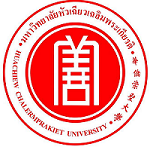Please use this identifier to cite or link to this item:
https://has.hcu.ac.th/jspui/handle/123456789/332Full metadata record
| DC Field | Value | Language |
|---|---|---|
| dc.contributor.advisor | กมลทิพย์ ขลังธรรมเนียม | - |
| dc.contributor.advisor | หทัยชนก บัวเจริญ | - |
| dc.contributor.advisor | Kamonthip Khungtumneum | - |
| dc.contributor.advisor | Hathaichanok Buajaroen | - |
| dc.contributor.author | จันทิรา ไชยศรี | - |
| dc.contributor.author | Jantira Chaisri | - |
| dc.contributor.other | Huachiew Chalermprakiet University. Faculty of Nursing | - |
| dc.contributor.other | Huachiew Chalermprakiet University. Faculty of Nursing | - |
| dc.date.accessioned | 2022-05-28T16:30:18Z | - |
| dc.date.available | 2022-05-28T16:30:18Z | - |
| dc.date.issued | 2013 | - |
| dc.identifier.uri | https://has.hcu.ac.th/jspui/handle/123456789/332 | - |
| dc.description | วิทยานิพนธ์ (พย.ม.) (การพยาบาลเวชปฏิบัติชุมชน) -- มหาวิทยาลัยหัวเฉียวเฉลิมพระเกียรติ, 2556 | th |
| dc.description.abstract | การวิจัยแบบทบทวนเอกสารครั้งนี้ มีวัตถุประสงค์เพื่อวิเคราะห์และสังเคราะห์การจัดการภาวะอ้วนในเด็ก จากงานวิจัยที่เป็นส่วนหนึ่งของการศึกษาและไม่เป็นส่วนหน่งของการศึกษาในประเทศไทยและต่างประเทศ โดยใช้รูปแบบการปฏิบัติตามหลักฐานเชิงประจักษ์ของศูนย์ปฏิบัติการพยาบาลขั้นสูงประเทศสหรัฐอเมริกา (Soukup. 2000) โดยผู้วิจัยใช้ 2 ขั้นตอนจาก 4 ขั้นตอน ดังนี้ 1) ระยะตัวกระตุ้นในการกำหนดปัญหา (Evidence-Trigger) และ 2) ระยะการทบทวนและสืบค้นหลักฐานเชิงประจักษ์สำหรับการปฏิบัติที่เป็นเลิศ (Evidence Observed Phase) ด้วยการกำหนดคำสำคัญ สืบค้นจากระบบฐานข้อมูล Science Direct, PubMED Central, MD Consult และ Thailist ซึ่งเป็นงานวิจัยเกี่ยวกับการจัดการภาวะอ้วนในเด็กระหว่างปี พ.ศ. 2546-2555 และมีระดับความน่าเชื่อถือหลักฐานเชิงประจักษ์ระดับ 1-3 มีทั้งหมด 30 เรื่อง จากนั้นทำการวิเคราะห์และสังเคราะห์งานวิจัยดังกล่าว จนได้แนวปฏิบัติทางการพยาบาลที่เป็นเลิศเพื่อจัดการภาวะอ้วนในเด็ก ผลการศึกษาพบว่า จากการวิเคราะห์งานวิจัยที่เป็นส่วนหนึ่งของการศึกษาและงานวิจัยที่ไม่ใช่ส่วนหนึ่งของการศึกษาจำนวน 30 เรื่อง ผู้วิจัยจัดกลุ่มเนื้อหาออกเป็น 4 ประเด็น ได้แก่ 1) การประเมินภาวะอ้วนในเด็ก 2) การประเมินเพื่อคัดแยกประเภทภาวะอ้วนในเด็ก 3) วิธีการจัดการภาวะอ้วนในเด็ก และ 4) วิธีการประเมินผลของการจัดการภาวะอ้วนในเด็ก ส่วนแนวปฏิบัติการพยาบาลที่เป็นเลิศประกอบด้วย 1) การประเมินภาวะอ้วนในเด็กเป็นกระบวนการเริ่มต้นของพยาบาลเวชปฏิบัติชุมชนในการบ่งชี้ว่าเด็กที่เป็นกลุ่มเป้าหมายเกิดภาวะอ้วนที่ต้องได้รับการดูแล โดยการประเมินมาตรฐานการเจริญเติบโตของเด็กไทยซึ่งสร้างโดยกรมอนามัย กระทรวงสาธารณสุข (2542) ซึ่งเป็นเครื่องมือที่ประเมินภาวะอ้วนได้ดี ง่ายต่อการปฏิบัติ 2) การประเมินเพื่อคัดแยกประเภทภาวะอ้วนในเด็ก ด้วยการซักประวัติการเจ็บป่วยปัจจุบัน ประวัติเจ็บป่วยในอดีตและการใช้ยา ประวัติครอบครัว ลักษณะการเลี้ยงดู พฤติกรรมการบริโภคของเด็กและครอบครัว และการตรวจร่างกายตามระบบเพื่อเป็นการคัดแยกเด็กอ้วนออกเป็น 2 ลักษณะ ได้แก่ 2.1 เด็กอ้วนที่มีภาวะแทรกซ้อน ที่พยาบาลเวชปฏิบัติชุมชนต้องดำเนินการส่งต่อเพื่อการณักษาต่อไปและ 2.2 เด็กอ้วนที่ไม่มีภาวะแทรกซ้อน 3) วิธีการจัดการภาวะอ้วนในเด็ก ต้องมีการจัดการแบบมีส่วนร่วมทั้งครอบครัว โรงเรียน และชุมชนเนื่องจากทั้งสามส่วนเป็นองค์ประกอบทางด้านสิ่งแวดล้อมที่มีผลต่อพฤติกรรมของเด็ก และ 4) วิธีการประเมินผลของการจัดการภาวะอ้วนในเด็ก เน้นการประเมินพฤติกรรมการรับประทานอาหารและการออกกำลังกาย การประเมินภาวะอ้วนด้วยการชั่งน้ำหนักวัดส่วนสูงและการติดตามเยี่ยมบ้าน ข้อเสนอแนะแนวปฏิบัติการพยาบาลที่เป็นเลิศเพื่อจัดการภาวะอ้วนในเด็กนี้สามารถนำไปใช้เป็นส่วนหนึ่งของการพัฒนาคุณภาพการบริการของพยาบาลเวชปฏิบัติได้จริง | th |
| dc.description.abstract | The purpose of this documentary research is to analysis management of obesity in children frome research is part of study and not part of study in Thailand and foreign country, by adapting evidence based practice model of the Advanced Nuursing Practice Center of U.S.A. (Soukup, 2000). The researcher uses two of four steps 1) Evidence-Trigger Phage and 2) Evidence Observed with Keywords were specifies in the search of relevant evidences from the research study of ScienceDirect, PubMED Central, MD Consult and Thailis. Reference list between the years 2003-2012 with reliable evidence grade 1-3, thirty related literature. From the analysis and synthesis of thee said research literatures, the Best nursing practice for management obesity children. The result of analysis showed that the research is part of study and not part of study 30 papers. Content were grouped into 4 issue 1) Assessment of obesity in children 2) Screening of obesity in children 3) How to manage obesity children and 4) Evaluate the effect of management obesity children. The Best nursing practice consists of 1) Assessment to identify children with obesity is the first process of community nurse practitioner for identify obesity children target group need to be taken or not. Standardized assessment of child growth Thailand created by Department of Health Ministry of Public Health (1999) is a tool to assess well easy to follow 2) Assessed for screening obesity in children should ask illness, paet history illness, history of drug used, family history, behavior of children and families, parenting style and physical examination for separate children in two group 2.1 Obesity children with complicate Community nurse practioner be taken to refer for threat 2.2 Obesity children without complicate 3) How to manage obesity children have to management whole family school and community beeacuse three environmental factoe affect children's behavior 4) Evaluate the effect of management obesity children focus to evaluate eating behavior, physical activity, weight, height and home visit. Recommendation to evaluate the Best nursing practice for management of obesity in children. Furthermore, to integrate the Best nursing practice as part of a quality care development of community nurse practitioner. | th |
| dc.language.iso | th | th |
| dc.publisher | มหาวิทยาลัยหัวเฉียวเฉลิมพระเกียรติ | th |
| dc.subject | โรคอ้วนในเด็ก | th |
| dc.subject | Obesity in children | th |
| dc.title | แนวปฏิบัติการพยาบาลที่เป็นเลิศเพื่อการจัดการภาวะอ้วนในเด็ก : การสังเคราะห์งานวิจัย | th |
| dc.title.alternative | Best Nursing Practice for Management of Obesity in Children : the Synthesis of Thesis | th |
| dc.type | Thesis | th |
| dc.degree.name | พยาบาลศาสตรมหาบัณฑิต | th |
| dc.degree.level | ปริญญาโท | th |
| dc.degree.discipline | การพยาบาลเวชปฏิบัติชุมชน | th |
| Appears in Collections: | Nursing - Theses | |
Files in This Item:
| File | Description | Size | Format | |
|---|---|---|---|---|
| Abstract.pdf Restricted Access | 105.13 kB | Adobe PDF | View/Open Request a copy | |
| Tableofcontents.pdf Restricted Access | 83.2 kB | Adobe PDF | View/Open Request a copy | |
| Chapter 1.pdf Restricted Access | 136.24 kB | Adobe PDF | View/Open Request a copy | |
| Chapter 2.pdf Restricted Access | 438.2 kB | Adobe PDF | View/Open Request a copy | |
| Chapter 3.pdf Restricted Access | 125.47 kB | Adobe PDF | View/Open Request a copy | |
| Chapter 4.pdf Restricted Access | 540.4 kB | Adobe PDF | View/Open Request a copy | |
| Chapter 5.pdf Restricted Access | 115.72 kB | Adobe PDF | View/Open Request a copy | |
| References.pdf Restricted Access | 412.74 kB | Adobe PDF | View/Open Request a copy |
Items in DSpace are protected by copyright, with all rights reserved, unless otherwise indicated.
